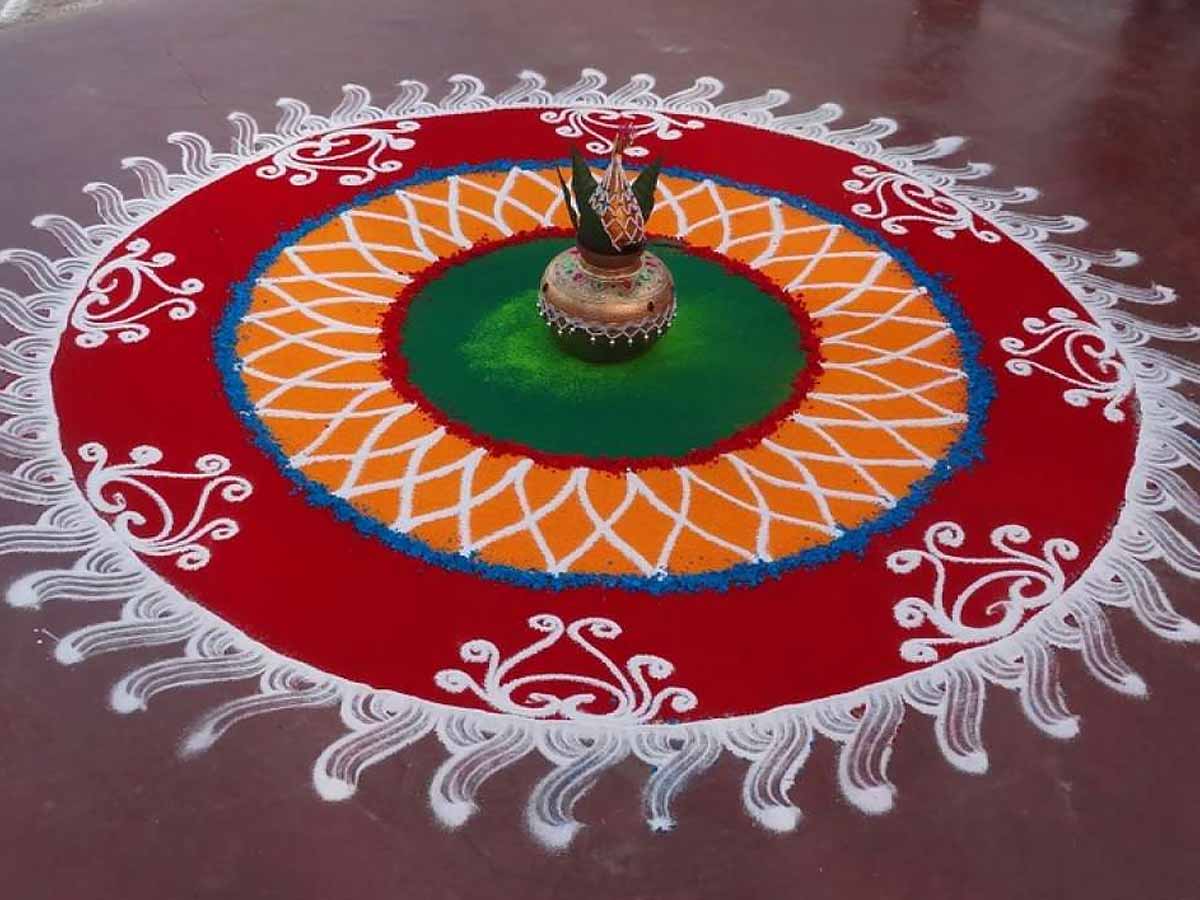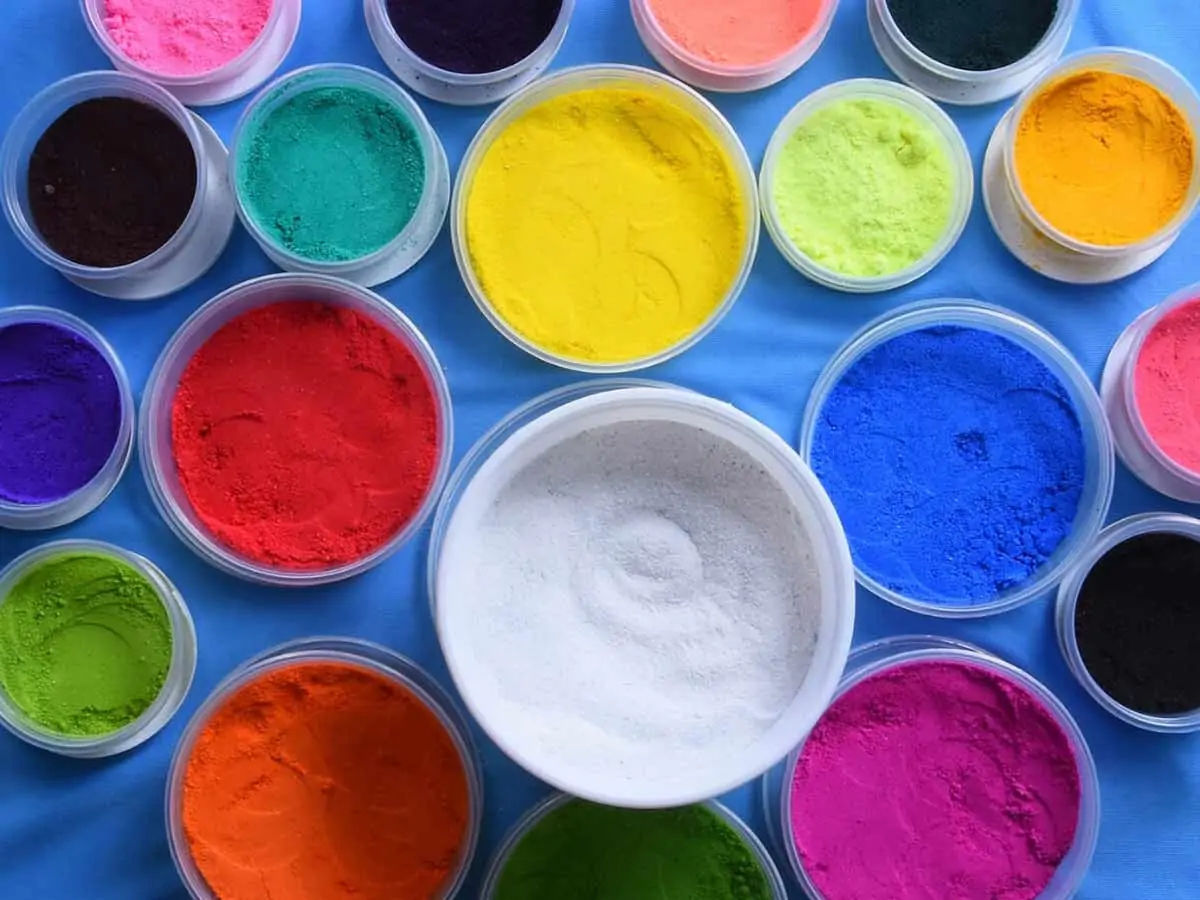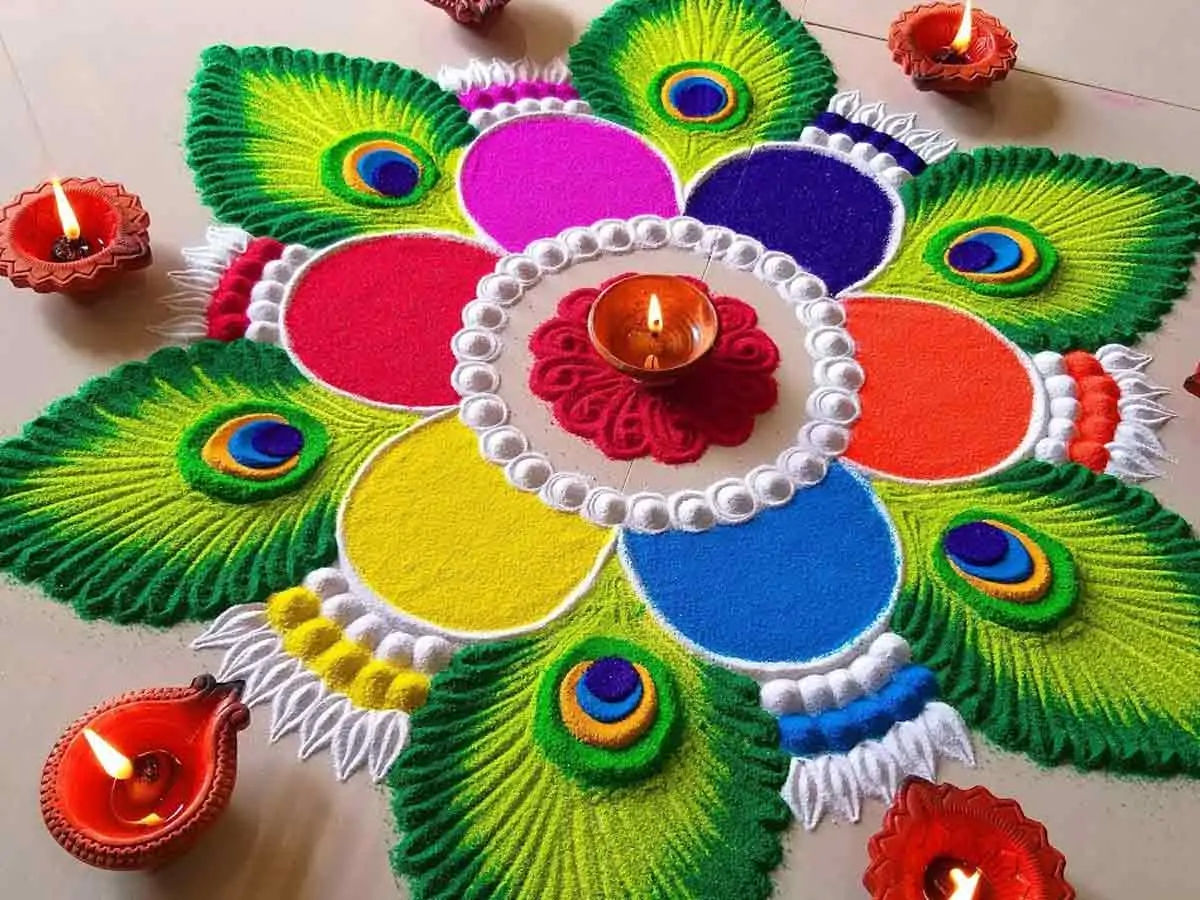Rangoli - Traditions and Designs
Shortpedia
Content Team
Diwali, the festival of lights, commemorates and salutes the triumph of good over evil. We clean our homes and decorate them with lights, diyas, new furniture, flowers, and rangolis to commemorate the occasion. Vibrant rangolis add a splash of color to your home. We usually make rangolis at the entrance to our homes to welcome the Goddess of Riches, Goddess Laxmi and to keep evil or any kind of negativity out.
Rangoli is known by various names depending on the state and community. Rangoli play an important role in the daily life of a Hindu household, especially when the flooring of houses was tilled. They are typically made outside the main entrance's threshold in the early mornings after cleaning the place. The postures required to make a rangoli have traditionally been used as a form of exercise for women to straighten their spines. The rangoli reflects a household's happiness, positivity, and liveliness and is intended to welcome Lakshmi, the goddess of riches and good fortune. Darida is said to reside in a Hindu household that lacks a clean entrance and rangoli.
Making rangoli is a must-do during the Diwali festival. Rangoli has a long history, and it was once thought that drawing rangoli would bring good luck and prosperity to the home. Rangoli is also rendered during Tihar, Onam, Pongal, and other Hindu festivals in the Indian subcontinent, in addition to Diwali. Designs are passed on from generation to generation, preserving the art form and culture.

Making rangolis for your front door is a centuries-old tradition. Rangolis can be made with colors, paints, pulses, rice powder, crushed limestone, or even chalk. Rangoli making is no longer a challenging task because unique and beautiful rangoli tool kits are readily available in the market and online. You may order your favorite rangoli making a stencil and simply fill in the gaps with your favorite colors by putting the stencil on the field.
Rangoli designs may be plain geometric forms, depictions of deities, or flower and petal shapes suitable for the occasion. They can also be made with intricate designs created by a large group of people. The geometric designs positioned in and around household yagna shrines may also reflect powerful religious symbols. Historically, simple patterns were drawn around the cooking areas to deter insects and pathogens. Synthetic colors are a more recent addition. Other components include red brick powder and, in the case of flower rings, flowers and petals.
If you are a novice, choose a rangoli style with bold columns so that you only need to fill in a few colors. These rangoli designs will be simpler to create and will stand out more. Also, don't forget to draw the whole pattern on the floor with chalk or crayon.
Elements of best Rangoli Designs
1. Colors and designs

The most significant aspect of a rangoli is that it is colorful. These are auspicious symbols that play an important part in the design. The design is passed down through generations as they are made – and is required to create these symbols. Traditionally, each new generation learns the art, and so a family maintains the tradition. The lotus flower and its leaves, mango, Tue vase, fish, various types of birds such as parrots, swans, peacocks, human figures, and foliage are some of the main symbols in rangoli. Rangoli is often made for special occasions such as Diwali. Diya, also known as Deep, Ganesha, Lakshmi, flowers, and birds of India, are some special patterns for Diwali Rangoli. Faces of Hindu deities, geometric figures, peacock motifs, and round floral designs are among the styles. Many of these motifs are popular and have been passed down over centuries. Rangoli thus symbolizes and reflects India's rich heritage and the fact that it is a land of festivals and color. Rangoli is celebrated with Diwali designs.
2. Materials
The ingredients used to produce the rangoli are widely available. As a result, this art is found in all households, rich and poor. Rangoli is mainly constructed with the right ingredients and elements: ground rice solution, dried leaf powder, color, charcoal, burned soil, sawdust, and other similar substances. Rangoli is made with colored quartz powder, rice, dry flour, flower petals, turmeric (pasupu), vermillion (sindooram), and colored sand.
3. Background Surface
Rangoli's backdrop is made up of a transparent floor, wall, or Llype. Rangoli may be made in the middle of a yard, in the corners, or as a bell around it.
Another rangoli-making tradition is the Dehri gateway. A custom of decorating rangoli represents God's seat, depending on the lamp, a place of worship, and a sacrifice on the altar.
How to create Rangoli?

There are two primary and basic methods for creating a rangoli: dry and wet, which refer to the materials used to create the outline and (if desired) fill that outline with color. The artist marks a center point on the ground and cardinal points around it with a white material such as chalk, sand, paint, or flour, typically in a rectangle, hexagon, or circle depending on the area and personal preference and favorable. Extending the initially basic pattern results in an intricate and beautiful design. Natural motifs (leaves, petals, feathers) and geometric patterns are common and ordinary. Representational types are less common but by no means uncommon (like a peacock, icon, or landscape). Readymade Rangoli patterns and designs are often in the form of stencils or stickers. They are becoming more popular, making detailed or precise designs easier to make.
If the outline is full, the artist may choose to color it with either wet or dry materials such as paints, colored rice water, gypsum powder, colored sand, or dry pigments. To achieve lifelike hues, the artist can also use unprocessed materials such as seeds, grains, herbs, leaves, or flower petals. Crayons, dyes or dyed fabrics, acrylic paints, and artificial coloring agents are also becoming more popular, making for brilliant and vivid color choices. A newer, less artificial approach involves coloring cement with marble powder. This very precise method necessitates the preparation, but it is possible to draw beautiful portraits in this medium.
Faith and beliefs

Andaal, one of the twelve azhwars, has worshiped Lord Krishna and married him in the month of Margazhi. This month, unmarried girls wake up before dawn to draw a rangoli to greet the God Krishna. Rangoli formation is also mentioned in Hindu mythology. There are also references to rangoli in legends such as the Ramayana, where there is a debate about rangoli at Sita's wedding pavilion. Rangoli's cultural growth in the South began during the reign of the Chola rulers. Rangoli designs can be both modern and traditional. Nature is typically the inspiration for the designs, but they may also take abstract art.
